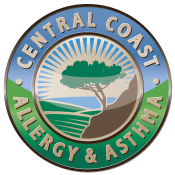Grasses are the most significant inducers of late spring to early summer pollinosis on all major continents. Members of the grass family are ubiquitous and cosmopolitan, accounting for approximately one-quarter of the globe's vegetation, They are found in deserts and mountains, and in freshwater to marine environments. Grasses have huge economic impact. Kentucky bluegrass (June grass, Poa pratensis) is, with perhaps the exception of timothy grass, the most commercially important perennial grass in the United States. Kentucky bluegrass is an aggressive invader of suitable soil, and it is estimated that 90% of its stands in the United States and Canada are wild pastures. It will crowd out other grasses. It produces abundant seed that is highly viable, and it is therefore an important commercial seed-grass. In addition to its seeding habits, it is also a strong sod builder, and is used extensively for lawns. It produces a dense turf because of its many creeping rootstocks, and deep fibrous roots that may grow down to a depth of 3 to 4 feet. The stalks will grow I to 4 feet in height. It is quite abundant throughout the northern states and mountainous regions, doing less well in the southern states during hot and dry summers, where it will wilt and brown out. It is most dense from Kentucky to Missouri, northward to Alaska and Labrador. In the Rocky Mountains it grows well in the valleys, but may be found in elevations up to 10.000 feet.
Because of similar native species, such as Poa agassizensis, and because of its great range, Kentucky bluegrass is felt by some to be a native grass. However, the majority view is that it was introduced from Europe, probably from England, where it is exceedingly abundant, and known as meadow grass. The term "bluegrass" was first applied to another introduced grass, Poa compressa, Canadian bluegrass, because of its dark blue--green color. The term was ultimately expanded to include all the Poa grasses.
Poo pratensis is a prolific producer of pollen. In the central states, pollen anthesis begins in mid-May. peaking in June. In more northern regions, pollination begins later. It has been estimated that, along with orchard grass (Dactylis glomerata), Kentucky bluegrass accounts for more grass pollinosis in the eastern United States during the first half of the season than all the other grasses combined. In mid-Europe, Pou prarensis is considered one of the most important of the grass species in pollinosis. In Germany and Austria, during the height of the season, grass counts easily exceed 1,000 particles/m3 and in France over 2,000 p/m3.
The genus Poa gives its name to the grass family, Poaceae (also known as Gramineae in older classifications). This is a very large family with several subfamilies and a number of tribes. The subfamily Pooideae (Festucoideae) of temperate pasture grasses contains many prolific pollen producers divided among five tribes:
- Poeae, containing among others Kentucky bluegrass, orchard, fescue, brome, and ryegrass
- Aveneae with oat and velvet grass
- Phalarideae with canary and sweet vernal
- Agrostideae with timothy, redtop, and foxtail
- Triticeae with western wheatgrass and the cereal grains wheat, rye. and barley.
Adapted from: Annals of Allergy, Richard Weber, MD, 2001
